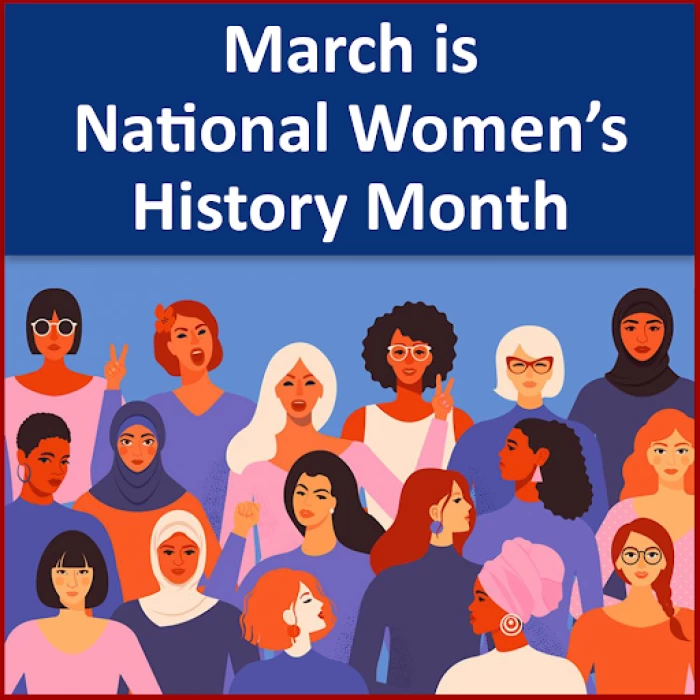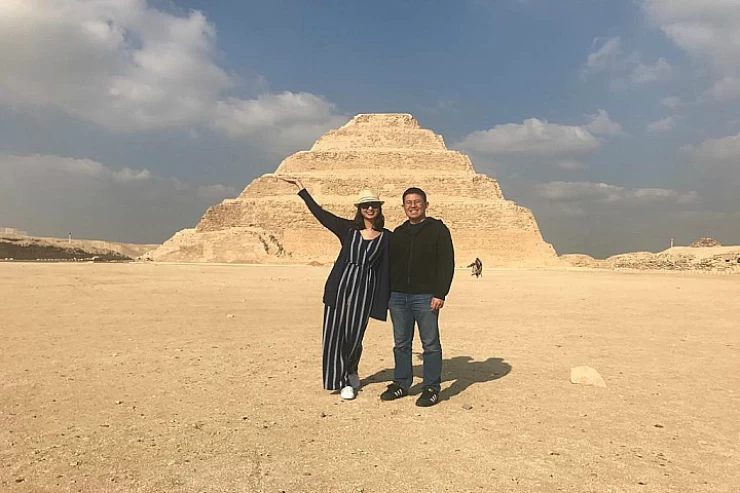
National Women's History Month – March 2021
National Women's History Month
It's Women's History Month stories 2021. The month-long celebration is a chance to acknowledge women’s contributions to history, culture, and society and has been observed annually in the month of March in the United States since 1987. From Abigail Adams to Susan B.
Anthony, women have been at the forefront of history-making moments in the United States. The month of March celebrates the contributions women have made throughout history in science, politics, law, sports, the arts, entertainment, and many other fields.
And here are some of the many great women who have made history in Egypt.
The Most Influential Women in Egyptian History
Hatshepsut, 1508–1458 BCE, Pharaoh
Queen Hatshepsut was the first female pharaoh in Ancient Egypt, coming to the throne in 1478 BC. She is thought to be one of the most successful pharaohs and Egyptologist James Henry Breasted considers her the “first great woman in history.
” She did a lot for Egypt during her 22-year rule. She established a lot of important trade routes which had been disrupted due to the Hyksos occupation of Egypt – which contributed to the growth of wealth in the 18th dynasty. She also oversaw the famous traditional expedition to the Land of Punt.
Queen Hatshepsut built one of the most beautiful Egyptian temples on the West bank of Luxor, it is located a couple of miles from the Valley of the Kings and Valley of the Queens.
She was also one of the most prolific builders of the time, commissioning hundreds of structures throughout Egypt. During your Egypt day tours be sure to visit Karnak’s Red Chapel (Chapelle Rouge), which is, a shine lined with carved stones depicting events from Hatshepsut’s life. Also, a great source to learn more about Queen Hatshepsut is to check Kara Cooney’s most recent book “The Women Who Would Be King”
Cleopatra VII (69–30 BCE), Queen of Egypt
Known as “the Queen of the Nile,” Cleopatra VII ruled over ancient Egypt for nearly three decades. is one of the most famous female rulers in history.
Her life inspired a Shakespeare play and several movies. Well-educated, smart, and powerful, she could speak several languages and had romantic and military alliances with leaders such as Mark Antony and Julius Caesar. She has earned a place in myth and history due to her powers of seduction and exotic beauty. Her story lives in many works of art including Alexandria.
Queen Nefertari, Great Royal Wife
Queen Nefertari, the wife of Ramses II. Their union likely started as a political one, but it blossomed into love and Ramses II celebrated that love with monuments and poetry dedicated to his beautiful queen. She was given various roles in her function as queen and Ramses II even took her on his military campaigns.
You can see the beautiful tomb Ramses II built for his wife, it is located in the Valley of the Queens near Thebes. It is the biggest and most elaborate in the valley and the well-preserved wall paintings offer a fascinating insight into her life. Queen Nefertari has one of the most amazing temples in Aswan, Abu Simbel temple which is considered one of the marks of Nubian monuments in Egypt.
Shajar al-Durr (d.1257 CE), Sultana
Shajar Al Durr was the second Muslim woman to become a queen/Sultana in Islamic history, and her full name was Asmat Al Din Umm Khalil Shajar Al Durr. Al Durr defended Egypt against the Crusaders’ occupation, gaining back Damietta from the French.
She was married to the Sultan, As-Salih Ayyub, before marrying a Mamluk soldier and eventual Sultan Izz Al-Din Aybak after her first husband died. Her rule over Egypt in between her husbands’ marked the end of the Ayyubid Dynasty and the beginning of the Mamluk Era. During this time, Cairo became the center of power, controlling Egypt and Syria for more than two centuries.
Samira Moussa, (1917–1952), First Egyptian Nuclear Researcher
Sameera Moussa was a nuclear physicist and the first Egyptian woman to hold a Ph.D. in atomic radiation. Her goal was to make medical nuclear power affordable to everyone, and she organized the Atomic Energy for Peace Conference.
In 1952, Moussa died in the US after her car fell from a height of 40 feet while embarking on a trip. There is a lot of conspiracy surrounding her death because the invitation she received for the trip turned out to be fake.
Lutfia al-Nadi (1907–2002), First Female Pilot
Lotfi El Nadi was the first Middle-Eastern woman as well as the first African woman to earn a pilot’s license. Becoming the first Egyptian female aviator, she earned her license when she was only 26 years old at a time when Egyptian women were expected to marry and become housewives after finishing their primary education.
Despite her father’s objections, El Nadi signed up to take flying class lessons. After only 67 days of study with 33 male classmates, El Nadi earned her pilot’s license.
Um Kulthum, (c.1898–1975), Singer
Umm Kulthum is the most-famous Egyptian singer and songwriter in Egypt and the Middle East. Given the honorific title Kawkab Al Sharq—Star of the East—Kulthum was known for her extraordinary-vocal abilities and her unique style.
During her lifetime, she sold over 80 million records worldwide. The love for Kulthum wasn’t only due to her strong voice, but also due to the type of songs she sang. Although she started off singing romantic songs, she also had powerful and encouraging songs for soldiers, Egypt’s working class, and those affected by the wars to uplift the Egyptians’ spirit.
Umm Kulthum is today still regarded as possibly one of the greatest female singers to have ever lived. Her signature look, with the chignon and dark glasses, has become iconic and still inspires pop artists and designers across the Middle East.
If you pass inside Luxor Market, you will surely enjoy Umm Kulthum's voice outside of Umm Kulthum Cafe, which is considered one of the distinctive landmarks of Luxor Market to attract tourism for more than 80 years and is run by Youssef Qassem or “Umm Kulthum's lover” as they call it. The uniqueness was not only in her distinctive voice and creativity on the stage, as she is the only woman for whom a museum in Egypt consisting of several halls has been established and contains her various belongings.
Princess Fatma Ismail (1853–1920), Patron of Education
Egyptian women supported the cause of education throughout their ages in order to advance society, and the women's renaissance in its long journey that spanned nearly a century and a half was linked to societal issues raised by the imperatives of progress, and among what this renaissance witnessed was girls ’education, that renaissance to which it mainly contributed to now Princess Fatima Ismail - that lady,
which was the cause and one of the Renaissance factors for Feminists in the modern era, and she was one of those who paved the way for Egyptian women to participate.
Today, with twenty-three faculties and more than 200,000 students graduating annually, Cairo University is Egypt’s largest higher education institution. The university celebrated its centenary in 2008, and throughout its entire journey, it has never forgotten the patronage of this one woman, whose generosity changed the face of an entire country.
Safiyya Zaghloul, (1878–1946), Political Activist and Revolutionary Figure
Safia Zaghloul was called "the mother of the Egyptians" because of her participation in the women's demonstrations during the 1919 revolution, she had a prominent role in political life and was the wife of the nation's leader Saad Zaghloul.
She went out in the ranks of the women demonstrators condemning the British occupation and demanding that Egypt obtain its independence from the grip of the British, and when Saad Zaghloul was exiled to the island of Seychelles and asked the British delegate to join her husband in exile, the delegate refused that, but after carrying the banner of the revolution after her husband's exile, the British delegate thought about the matter.
And he found that Safia Zaghloul's danger is similar to that of her husband, so he changed his mind and decided to agree to her exile with her husband, but Safia also changed her mind when she felt that her duty towards her homeland was greater than her duty towards her husband and that her homeland needed her more.















